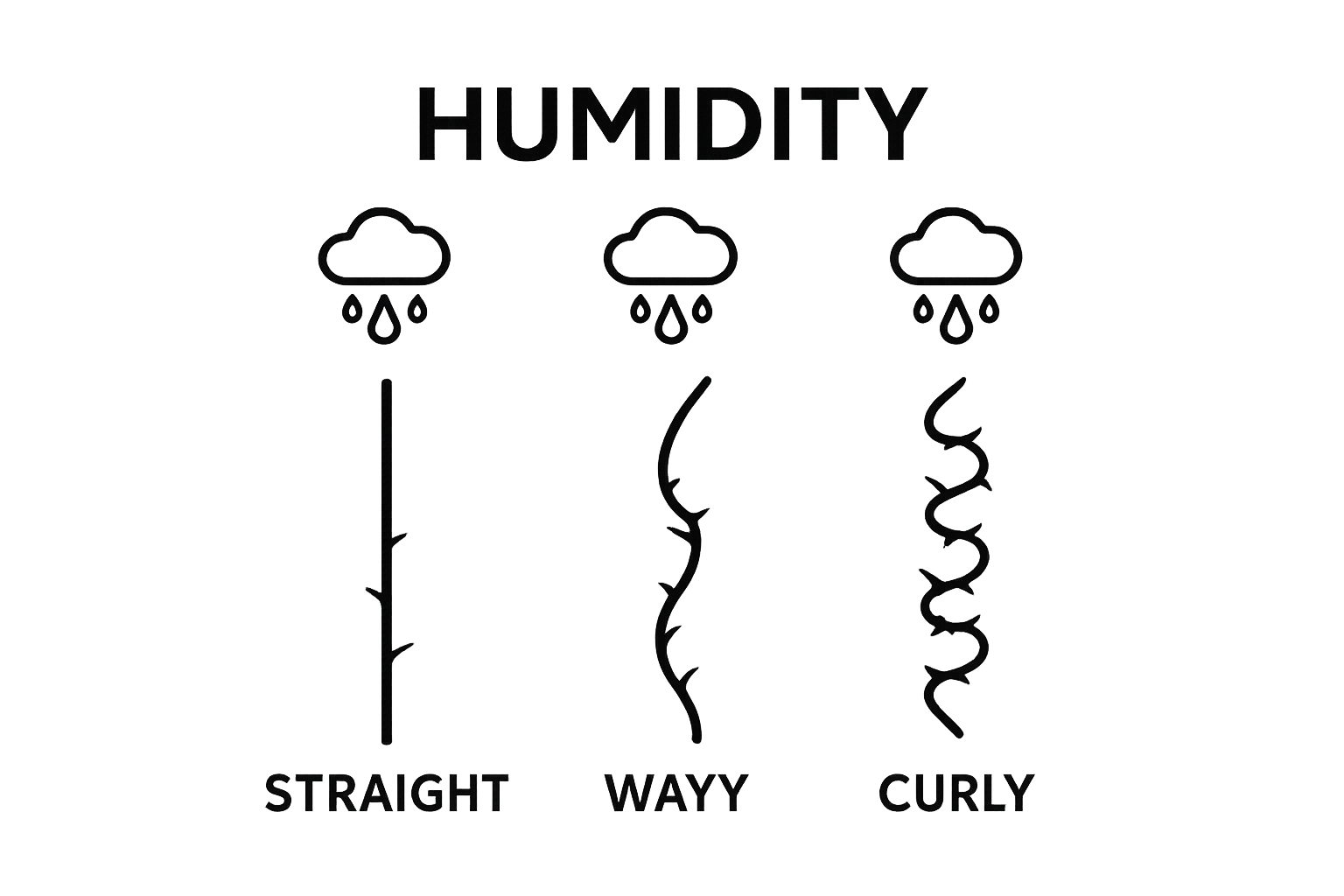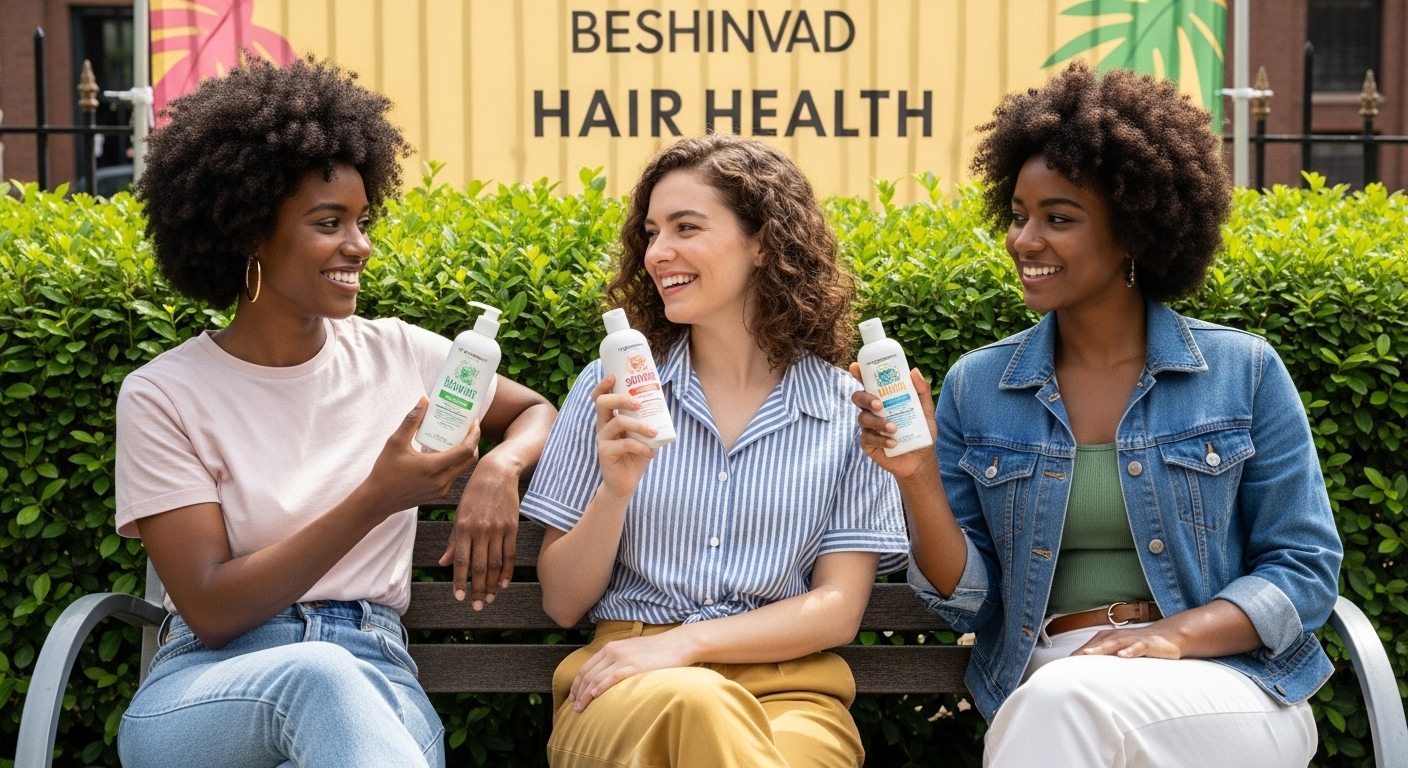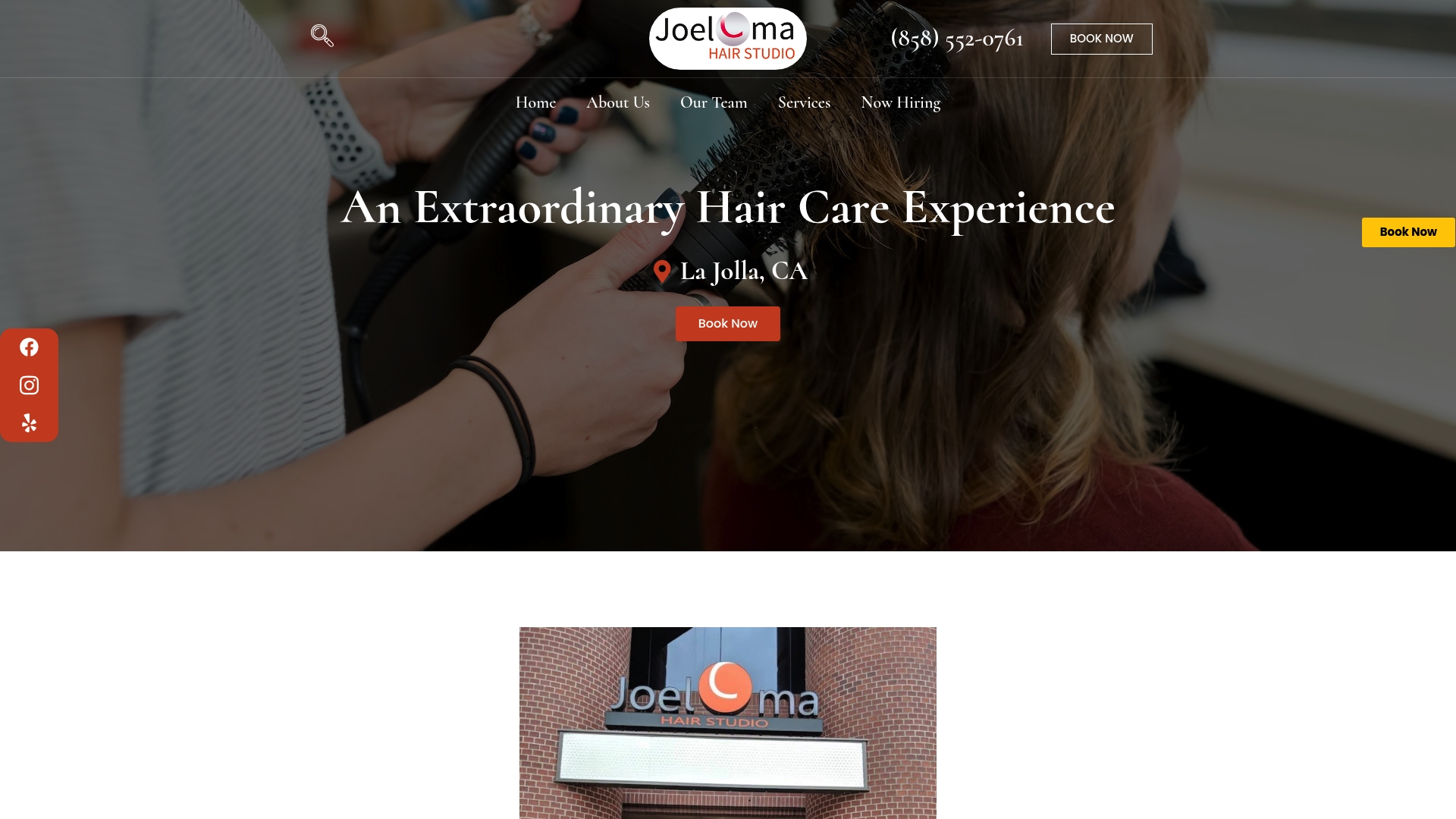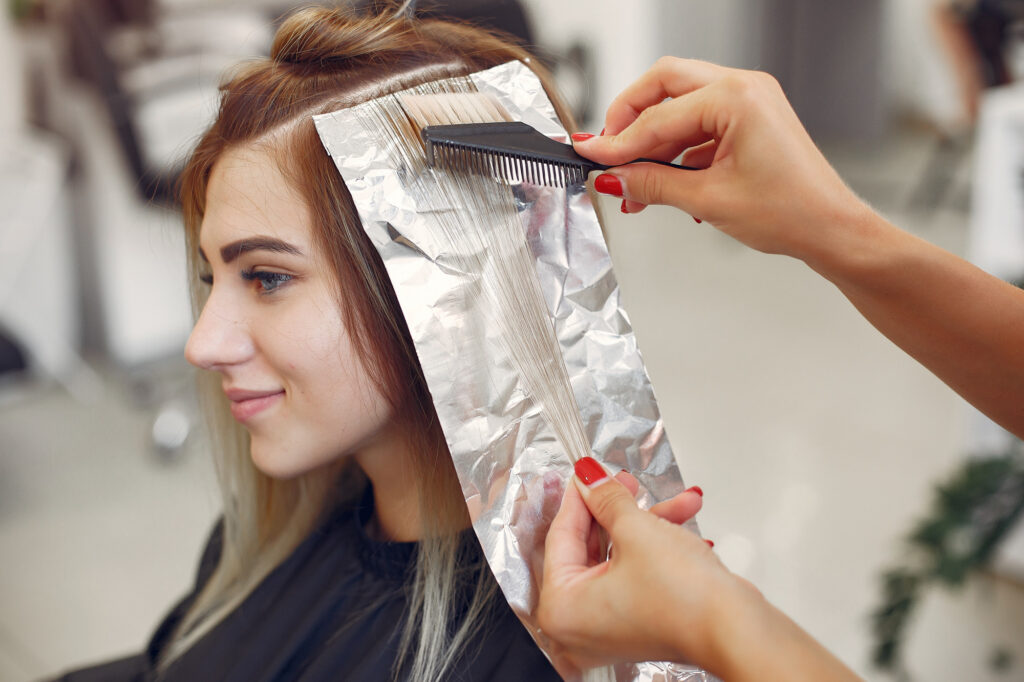Summer takes a toll on hair health in ways most people ignore. Prolonged sun exposure can cause substantial protein loss and cuticle damage that builds up silently day after day. Surprised? Most folks think winter is your hair’s worst enemy, but the truth flips that idea upside down. Summer’s UV and humidity can quietly wreck hair from the inside out, and the effects might only show up weeks later.
Table of Contents
- What Makes Summer Unique For Hair Health?
- Why Is Sun Protection Vital For Your Hair?
- How Humidity Affects Different Hair Types
- What Products Enhance Summer Hair Care?
- Understanding The Importance Of Hydration For Your Hair
Quick Summary
| Takeaway | Explanation |
|---|---|
| Protect hair from UV damage | Prolonged sun exposure breaks down hair’s protective proteins, leading to significant degradation. Use protective products like SPF leave-in conditioners. |
| Moisturize for hydration | Summer’s heat accelerates moisture loss, making hydration crucial. Use deep conditioning treatments to restore water balance and prevent brittleness. |
| Choose humidity-specific products | Different hair types react variably to humidity. Select products designed to manage frizz and retain manageability according to your hair texture. |
| Address cumulative summer damage | Hair sustains gradual damage from sun and humidity throughout summer. Implement a proactive hair care routine to mitigate long-term effects. |
What Makes Summer Unique for Hair Health?
Summer presents a complex set of environmental challenges that dramatically impact hair health in ways distinct from other seasons. Unlike winter’s dry cold or spring’s moderate conditions, summer creates a perfect storm of stressors that can significantly compromise hair quality and appearance.
UV Radiation and Hair Damage
Ultraviolet radiation represents one of the most critical summer threats to hair integrity. According to research from the International Journal of Trichology, prolonged sun exposure can cause substantial protein loss and cuticle degradation. The sun’s intense rays break down hair’s protective keratin structure, leading to:
- Increased hair porosity
- Accelerated color fading
- Structural weakening of hair shaft
The molecular damage occurs gradually, meaning hair might not immediately show signs of distress but will experience cumulative deterioration throughout summer months.
Humidity and Sweat Impact
Humidity transforms hair’s fundamental behavior, introducing moisture that disrupts hair’s natural protein bonds. When atmospheric water content rises, hair becomes more prone to:
- Frizz and unmanageable texture
- Increased scalp perspiration
- Potential fungal and bacterial growth
Sweat compounds these challenges by introducing salt and additional moisture, which can create an environment conducive to scalp irritation and potential hair follicle stress.
Understanding these unique summer dynamics allows individuals to develop targeted protection strategies. By recognizing how environmental factors specifically interact with hair’s molecular structure, one can implement precise interventions that maintain hair health during the most challenging season.
Why is Sun Protection Vital for Your Hair?
Sun protection transcends basic cosmetic concerns and represents a fundamental strategy for maintaining hair health and structural integrity. Unlike skin protection, hair damage from ultraviolet radiation occurs subtly and cumulatively, making proactive defense critical for long-term hair wellness.
Molecular Vulnerability of Hair Proteins
Research published in PubMed reveals that hair fibers possess inherent yet limited natural defense mechanisms against solar radiation. Ultraviolet rays systematically degrade hair’s protein structure, causing progressive molecular changes that compromise hair’s strength, elasticity, and appearance. These microscopic transformations manifest through:
- Protein bond breakdown
- Cuticle layer deterioration
- Reduction in natural keratin protection
The degradation process is particularly aggressive during summer months when UV intensity reaches peak levels, accelerating potential structural damage.
Chromatic and Structural Consequences
Beyond protein degradation, sun exposure profoundly impacts hair’s visual and physical characteristics. Prolonged radiation exposure triggers multiple detrimental effects, including permanent color alteration and mechanical property modifications. Hair pigments become increasingly vulnerable, leading to:
- Accelerated color fading
- Increased hair porosity
- Compromised mechanical resilience
Individuals with chemically treated or lighter-colored hair experience more pronounced vulnerabilities, requiring heightened protective interventions. The cumulative impact extends beyond aesthetic concerns, potentially necessitating more intensive hair restoration treatments.
Understanding sun protection as a comprehensive hair health strategy empowers individuals to implement targeted defense mechanisms. By recognizing ultraviolet radiation’s systematic destructive potential, one can develop nuanced approaches that preserve hair’s fundamental molecular integrity and aesthetic appeal.
How Humidity Affects Different Hair Types
Humidity represents a complex environmental factor that interacts uniquely with different hair textures, creating a dynamic landscape of molecular interactions that fundamentally alter hair’s appearance and behavior. Understanding these interactions requires examining how moisture penetrates and transforms hair’s structural composition.
Molecular Mechanics of Moisture Absorption
Research from the Journal of Clinical and Aesthetic Dermatology reveals that hair’s response to humidity depends on intricate protein structures and bond formations. When atmospheric moisture increases, hydrogen bonds between water molecules and hair proteins multiply, causing significant structural changes. These transformations manifest differently across hair types
 :
:
- Straight hair experiences minimal swelling
- Wavy hair develops increased volume and slight frizz
- Curly hair undergoes substantial texture expansion
The porosity of hair fibers plays a critical role in determining moisture absorption rates, with more porous hair types experiencing more dramatic changes.
Texture-Specific Humidity Responses
Each hair texture exhibits a distinct molecular reaction to environmental moisture. Fine, straight hair typically maintains its structure with minimal disruption, while dense, curly hair undergoes more pronounced metamorphosis. Factors influencing humidity’s impact include:
- Hair cuticle integrity
- Natural oil production
- Existing hair treatments
- Genetic hair strand composition
Understanding these nuanced interactions enables individuals to develop targeted hair care strategies that mitigate humidity’s transformative effects, preserving desired hair texture and appearance.
The table below summarizes how different hair types typically respond to elevated summer humidity, helping you choose targeted care strategies.
| Hair Type | Typical Humidity Response | Impact on Appearance |
|---|---|---|
| Straight | Minimal swelling | Maintains shape, slight limpness |
| Wavy | Increased volume, mild frizz | Noticeable puffiness, some frizz |
| Curly | Substantial texture expansion | Heightened frizz, unmanageable curls |
| Fine | May become limp or flat | Loss of volume, less definition |
| Coarse/Thick | Increased bulk, pronounced frizz | Unruliness, reduced shine |
What Products Enhance Summer Hair Care?
Summer hair care demands a strategic approach to product selection, focusing on protective and restorative formulations that counteract environmental stressors. The right products can transform hair maintenance from reactive damage control to proactive preservation of hair health and appearance.
Protective Barrier Technologies
According to Paul Mitchell the School, selecting lightweight yet effective products is crucial for summer hair protection. Specialized formulations create molecular barriers that shield hair from ultraviolet radiation, humidity, and environmental pollutants. Critical protective product categories include:
- Lightweight leave-in conditioners with SPF protection
- Anti-frizz hair serums
- Moisturizing hair oils with UV filtering properties
These products work by forming a microscopic protective layer that reduces moisture absorption and minimizes structural protein damage during intense summer conditions.
Hydration and Restoration Strategies
Summer’s extreme conditions necessitate advanced hydration techniques that go beyond traditional conditioning. Innovative hair care products now incorporate complex molecular structures designed to:
- Replenish lost protein structures
- Restore natural moisture balance
- Rebuild damaged hair cuticles
Deep conditioning treatments and intensive repair masks become essential interventions, addressing cumulative damage caused by sun exposure, chlorine, and saltwater. By targeting specific hair texture needs, these products can effectively mitigate summer-induced structural compromises.
Use the following table to compare common categories of summer hair care products and their main protective or restorative functions.
| Product Category | Main Function | Key Benefit in Summer |
|---|---|---|
| Leave-in Conditioner with SPF | Provides UV protection | Shields hair from sun damage |
| Anti-frizz Serum | Forms barrier against humidity | Controls frizz and texture |
| Moisturizing Hair Oil (with UV) | Hydrates and blocks UV rays | Prevents dryness and fading |
| Deep Conditioning Mask | Repairs and restores moisture | Rebuilds and nourishes hair |
| Intensive Repair Treatment | Addresses cumulative structural damage | Restores strength and elasticity |

Understanding product functionality allows individuals to curate a personalized hair care arsenal that adapts to summer’s unique environmental challenges, preserving hair’s natural beauty and structural integrity.
Understanding the Importance of Hydration for Your Hair
Hydration transcends simple moisture management and represents a critical foundation for maintaining hair’s fundamental structural integrity and aesthetic potential. The molecular complexity of hair fibers demands a nuanced approach to understanding how water interactions directly influence hair health and appearance.
Molecular Water Dynamics
Research in the International Journal of Trichology reveals that hair hydration operates through intricate molecular mechanisms. Water molecules interact with protein structures, creating complex hydrogen bonds that determine hair’s fundamental characteristics. These interactions profoundly impact:
- Hair fiber elasticity
- Structural protein alignment
- Overall mechanical resilience
The delicate balance of water content determines whether hair appears vibrant and manageable or becomes brittle and prone to breakage. Summer’s intense environmental conditions dramatically accelerate moisture loss, making proactive hydration strategies essential.
Physiological Hydration Responses
Hair fibers respond dynamically to moisture levels, with each hair type exhibiting unique hydration requirements. Curly and textured hair typically demands more intensive moisture interventions compared to straight hair types. Key physiological responses to hydration include:
- Enhanced cuticle protection
- Reduced protein structural damage
- Improved overall hair manageability
Understanding these nuanced interactions empowers individuals to develop targeted hydration strategies that preserve hair’s natural beauty and structural integrity, transforming moisture management from a reactive to a proactive approach.
Elevate Your Summer Hair Health With Professional Expertise
Frustrated by summer hair challenges like frizz, UV damage, and relentless humidity? This article unpacks why warm weather puts your hair at risk and how hydration, protection from UV, and the right products are essential for healthy, beautiful hair. The good news is you do not have to tackle these struggles alone. At Joel C Ma Hair Studio, our seasoned team understands the molecular science behind hair care and tailors each service to your personal needs, whatever your hair type or summer goal. Want to explore more ideas to protect your hair this season? Visit our Uncategorized Archives – Joel C Ma Hair Studio for tips and insights you may have missed.

Ready to experience personalized summer hair solutions in a luxury setting? Do not let the sun or coastal humidity damage your style. Book your tailored consultation at Joel C Ma Hair Studio now and discover advanced hydration, color protection, and artistry that reinforce your hair’s natural strength and beauty. Take action for your summer hair and unlock your healthiest look yet.
Frequently Asked Questions
What are the best ways to protect hair from UV damage in the summer?
To protect hair from UV damage, use lightweight leave-in conditioners with SPF, anti-frizz serums, and UV filtering moisturizing oils. These products form a protective barrier against the sun’s harmful rays and help maintain hair integrity.
How does humidity affect different hair types during the summer?
Humidity affects hair differently based on its texture. Straight hair experiences minimal changes, while wavy hair might get increased volume and slight frizz. Curly hair often undergoes significant texture expansion due to moisture absorption, affecting manageability.
What ingredients should I look for in summer hair care products?
Look for products that contain protective ingredients like SPF, hydrating oils, and silicone-based compounds to create a barrier against UV radiation and moisture. Additionally, seek out deep conditioning treatments to restore hair’s moisture balance and repair damage.
How can I effectively hydrate my hair in the summer?
To effectively hydrate your hair in the summer, incorporate deep conditioning masks and intensive repair treatments that focus on replenishing lost moisture. Additionally, consider using products specifically designed for your hair type to ensure optimal hydration and protection.
Recommended
- Services In Detail – Joel C Ma Hair Studio
- Straight Hair Styling Tips for Effortless Elegance in 2025 – Joel C Ma Hair Studio
- Understanding Hair Care for Athletes: Keeping Your Style Strong – Joel C Ma Hair Studio
- Master Cutting Curly Hair Techniques for Stunning Styles – Joel C Ma Hair Studio
- 5 Tips for Healthy Hair: Easy Steps for Shiny, Strong Locks | MyHair





